One question we often get at Knives Advisor is “can I pack my knives when travelling by place?”
Certain items are clearly prohibited on airplanes, including explosives and flammables. But what about knives? Can you pack knives in checked luggage? If so, what types of knives are allowed? And are do these restrictions vary across all of the states and/or countries you plan to travel through?
In this article, we’ll do our best to answer these questions. We’ll also touch on other related topics, including best ways to pack knives in luggage, how to protect checked knives from theft, international knife laws and more.
Disclaimer: Please note that this article is not legal advice. It is only meant as background information to help you with further research. If you need legal advice, talk to an attorney. If you’re seeking the latest airline regulations, contact the airport and/or airline representatives directly. It’s important to fully understand the regulations on packing knives in luggage, since packing the wrong type of knife may get you arrested. Regulations change often, and the recommendations provided in this article may not reflect the current set of regulations.
Can You Bring Knives on Planes in Hand Luggage?
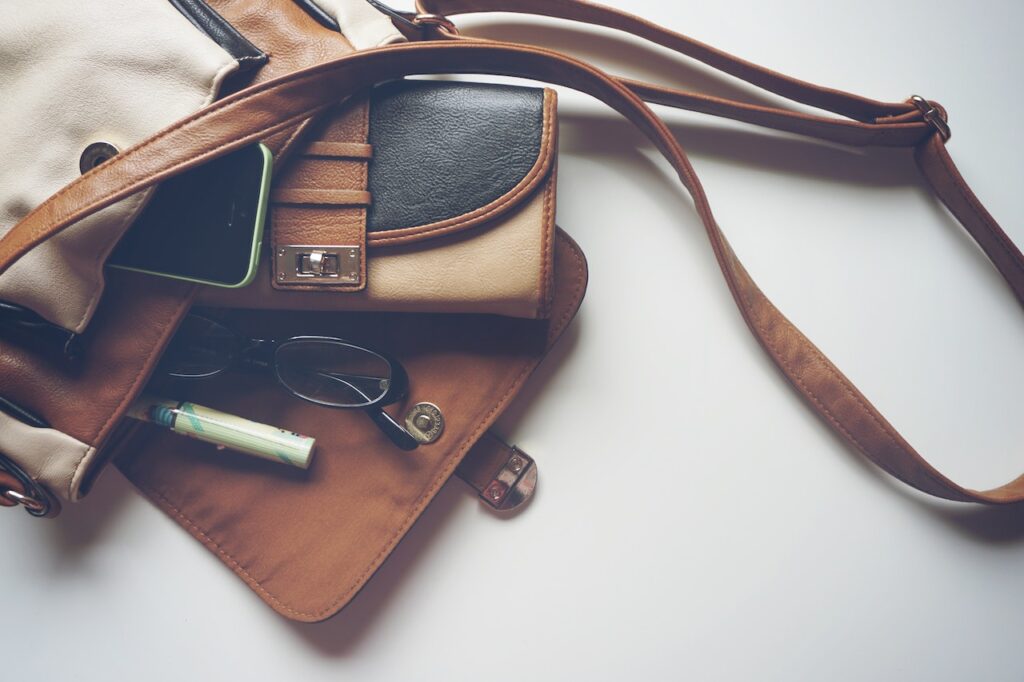
The TSA (Transport Security Administration) is the regulatory body that controls airlines that operate within the United States. According to the TSA, all items that can be used as weapons are banned from cabin luggage. This includes knives.
The only kinds of knives allowed on airplanes are the common round-bladed or plastic butter knives. You are able to freely pack them inside your carry-on, personal item (ie, purse or backpack), or carry them inside a pocket when going through airport security.
According to the TSA, there are no limitations on how many plastic knife utensils you can bring, and there are no requirements on concealing/packing them. So long as long as these have a rounded end, are made from plastic, and meant for food consumption, you should be good to go.
In 2013, TSA announced that they were considering allowing knives with small blades in cabin baggage, including pocket knives and potentially small tactical knives with blade lengths under 6cm (2.36 inches). Note, however, that this proposed rule was never actually implemented as it was quite contentious.
We have found a few contradicting articles related to this update which researching this article. But as of today, keep in mind that only plastic or round-bladed butter knives are allowed in any cabin luggage.
Can You Pack Knives in Checked Luggage?
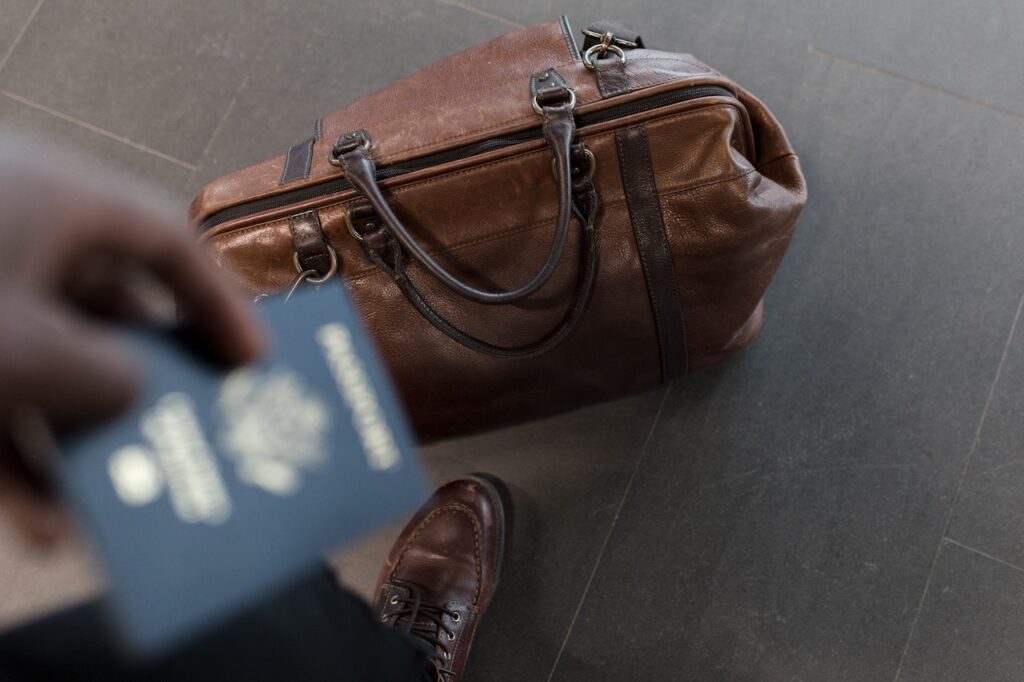
According to the TSA, you can bring any type of knife in your checked luggage. This includes Swiss army knives, shurikens, and even swords. The TSA doesn’t restrict the blade length, and there are no specific restrictions on blade curvature, concealed blades, or other related knife characteristics.
That said, the TSA requires that any sharp objects be safely and securely packed inside passenger luggage. This allows security agents to check contents without getting harmed in the process. When packing a knife in checked luggage, always secure the blade to avoid accidental injuries that may happen if an inspection is performed. The last thing you want is to injure an inspection agent that is merely doing his/her job. If an inspection officer get injured because you didn’t properly secure your knives, you may get sued.
Note, however, that just because the TSA allows a particular item in your checked luggage doesn’t automatically mean you’re in the clear. The TSA is only one entity when it comes to regulating the contents in checked luggage. Many types of knives are banned from checked luggage by other airline representatives, customs, as well as other authorities.
Butterfly knives are a good example. While these types of knives are not legal in many states, the TSA may not care if you’ve checked a butterfly knife in your luggage. However, if the TSA security officer recognizes this type of knife as illegal in that specific state, he/she could contact the local police and have you arrested for carrying an illegal knife. So in sum, the TSA doesn’t enforce knife laws but the police do.
Do You Have to Declare Knives in Checked Luggage?
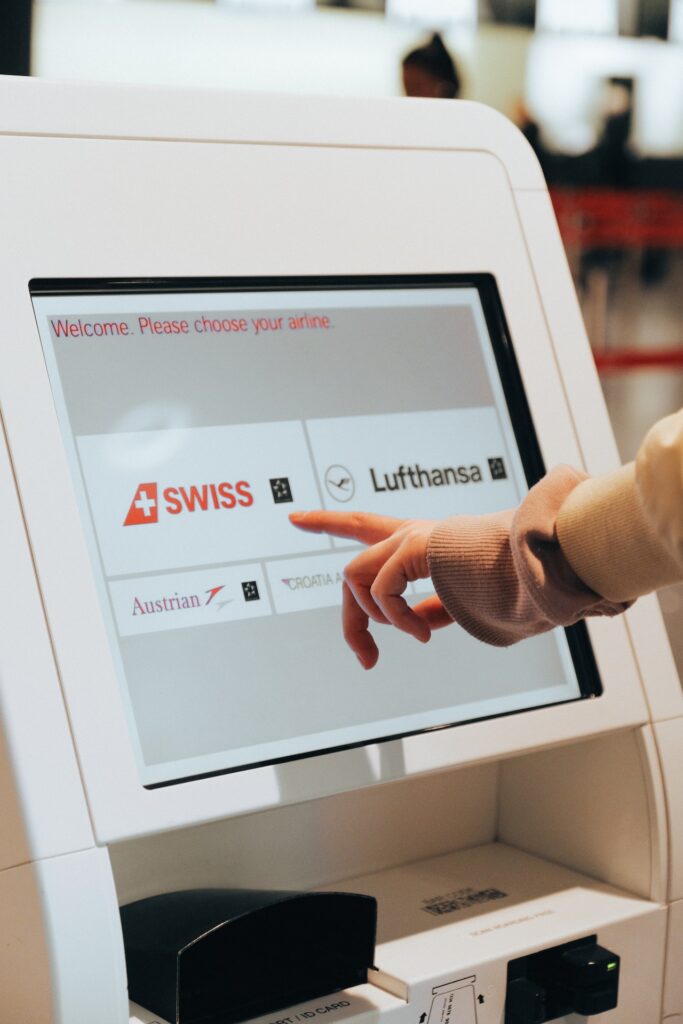
Officially, you aren’t required to declare knives in your luggage in the US since knives are classified as “sharp objects”. The TSA requires you to declare firearms, large quantities of medications, and other items. But currently, they do not require you to declare sharp objects.
That said, we advise that you voluntarily declare knives at the check-in desk, particularly if you’re flying internationally. During periods of stress such as the holiday season, airline employees can sometimes forget or even misunderstand the rules. Additionally, some countries require all knives to be declared. It’s always best to err on the side of caution and voluntarily declare any knives in your luggage,
While it’s not required to declare a knife in checked luggage within the US, we’ve heard of instances where a person’s checked baggage wasn’t loaded on the airplane because security officers found an undeclared knife in the suitcase. Generally speaking, most travelers who pack knives in their checked luggage declare them, and this is typically not an issue. So don’t chance it. It’s quick to do, and may even prevent your luggage from not getting loaded on the plane.
Types of Knives that are Allowed in Checked Passenger Luggage
ALLOWED: Pocket Knives/Swiss Army Knives
In general, pocket knives such as Swiss Army Knives are pretty much legal worldwide. In our research, we haven’t identified any state or country where pocket knives are banned. So, while you may want to double check with your airline, it’s likely you will be able to safely pack your pocket knife in your checked luggage.
ALLOWED: Kitchen Knives and Chef Knives
It is perfectly fine to pack common kitchen knives, such as chefs knives and other similar varieties, in your checked luggage. You shouldn’t have any trouble here, as this is a very common type of knives.
However, keep in mind that packing an expensive set of kitchen knives may be susceptible to theft so pack carefully. That said, we haven’t heard of any instances where a set of kitchen knives were stolen from checked luggage.
LIKELY ALLOWED: Antique Knives and Blunt Decorative Knives
While it is true that most countries will allow decorative/antique knives in your checked baggage, some will not. Admittedly, this is a bit of a gray area and could be subject to a search. If the antique or decorative knife has a long blade or a blade that is highly curved, always check with the local authorities before travelling. This includes representatives of all countries you may pass through during international travel, including layover/connecting airports. Of course, for expensive antique knives, you will also want to ensure they are properly insured.
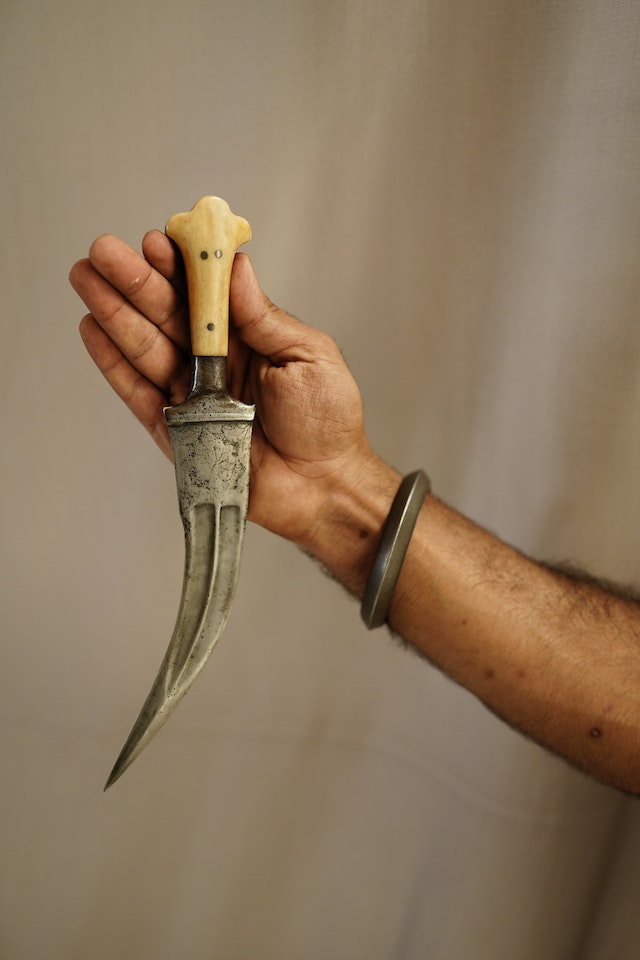
LIKELY ALLOWED: Small Fixed-Blade Knives with Short Blades
If you have a knife with a short, fixed blade that is not concealed, it should be fine to include in checked baggage. However, this will depend on both the departure and destination state/country. You will want to research the laws for “concealed carry” as this varies by state and country. For example, some countries restrict knife length to 3 inches, some restrict knife length to 5 inches, while some have no restrictions. The same is true for US states.
LIKELY ALLOWED: Damascus Knives
Damascus steel is a type of steel with a unique wavy patterned design. In addition to having appealing aesthetics, Damascus steel is desirable as it is typically both hard and flexible. It also holds its edge well. Generally speaking, Damascus knives are treated in the same way as fixed blade knives. This means that the TSA allows you to pack Damascus knives in your checked luggage. However, knives that exceed a certain blade length are banned in some states and countries. That said, Damascus knives typically fall under this limit, but as always check with your airline representatives if you have doubts.
LIKELY ALLOWED: Fake Plastic Toy Knives and Swords
When it comes to toys (ie, toy swords and knives), the TSA is not completely clear. On their website, the TSA recommends that all toy weapons should be packed in your checked luggage; however, it also suggests that some items might also be allowed in hand luggage.
The bottom line is this. If you decide to travel with a toy knife and it is sharp and/or looks like a real knife, pack it in your checked luggage. While blunt plastic knives that look like toys might be allowed in hand luggage, this isn’t clear and the final decision always rests with the security officer.
LIKELY ALLOWED: Balisong Trainer (Squiddy) Knives
Sometimes called “Squiddy” knives, Balisong knives are replicas of butterfly knives without a sharp blade. These are specifically designed as training knives, and help people safely practice butterfly knife skills.
As of this writing, Balisong knives appear to be legal in all US states; however, they aren’t legally specified in many countries. If you are flying internationally, they may be confiscated and you might find yourself in a room with a translator explaining yourself.
According to the TSA, Balisong knives fall are categorized as “fake knives and toy knives resembling real knives” and these are banned in hand luggage. That said, they are allowed in checked luggage.
Types of Knives that are Illegal to Travel With

While some knives are allowed when travelling, many types of knives are explicitly banned in certain parts of the US and abroad. Generally speaking, knifes that are banned either have a long blade, a concealed blade, or a blade that can otherwise inflict serious injury.
When travelling, always avoid packing these kinds of knives in checked luggage and choose alternative means of transport. This may include standard mail, or other shipping services such as UPS or FedEx.
Flick Knives
Flick knives (otherwise known as automatic knives or switchblades) are characterized by a concealed blade that rapidly appears when a user presses a button. Because flick knives are banned in most US states and many countries, avoid packing them in any checked luggage.
Butterfly Knives
Like flick knives, butterfly knives are also banned in most US states and countries. As a result, avoid packing them in any checked luggage.
Knives That Look Like a Pen, Lighter, or Other
Sometimes you may come across knives that resemble various everyday items, such as lighters and pens. These “spy-knives” or “lighter knives” are clever and make interesting gifts for your outdoorsman friends. But they are banned in most places. Avoid packing these suspicious-looking knives in any luggage when you travel.
Throwing Knives, Axes and Shurikens
Knife throwing, axe throwing, and tomahawk throwing is a fun pastime and sport. And many throwing venues and clubs are opening up throughout cities in the US. However, traveling with a set of professional throwing knives can be a real pain, particularly for those travelling to competitions. Regulations vary, so be sure to check with the authorities before travelling. But as a general rule, assume that traveling with sharp throwing objects is highly restricted. Practice throwing knives and shurikens made of heavy rubber, however, are legal.
Push Daggers
Push daggers are a specific class of weapon characterized by a perpendicular handle and straight blade. These are designed specifically for penetrating, not slicing. Sometimes popular as a means of personal defense, push daggers have little use other than self-defense. As a result, they are banned in many states and countries. Avoid packing any push daggers in your travel luggage.
Fixed Blade Bowie/Hunting Knives
While some fixed blade knives are legal, some with longer blade lengths or serrated edges are banned in many states and countries. Always confer with the authorities before packing one in your checked luggage, but assume that these are banned.
Can You Bring Kitchen Cutlery (Silverware) on Planes?
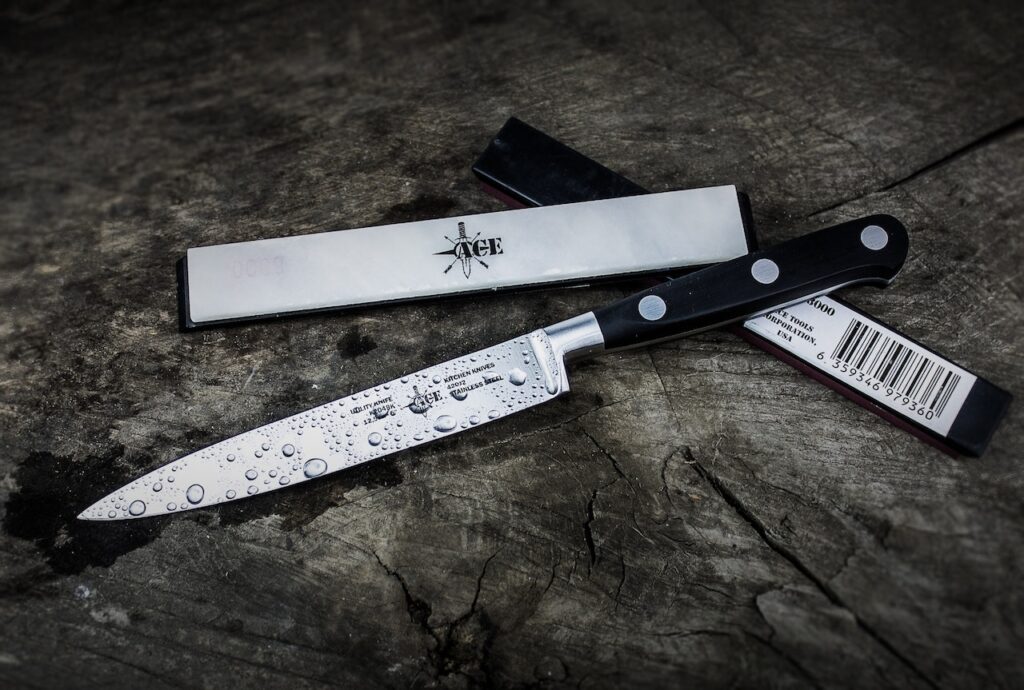
In general, yes. According to the TSA, kitchen cutlery is allowed in both checked and carry-on luggage, but kitchen knives are not allowed in hand luggage.
According to the TSA, “knives, except for plastic or round-bladed butter knives, are not allowed in carry-on bags.”
Unlike knives, you are free to bring metal forks and spoons in hand luggage as well as in checked luggage with no restrictions. When traveling with a knife set, we suggest wrapping the entire block with packing tape in your checked baggage to secure the contents in flight.
Despite this, TSA regulations are always changing. The bottom line is that if you are travelling and need to bring your chef knife set, this must be packed in your checked baggage.
What are the Knife Rules for International Flights?

Before traveling internationally, it’s important to always check the knife rules specific to each location you’re travelling to. This includes any connecting countries.
At a minimum, we recommend the following:
- First, identify the country-specific airline regulator. In Canada, for example, the airline regulator is the TCCA (Transport Canada Civil Aviation), while in the US it is the TSA (Transport Security Administration).
- Second, identify representatives for each country and/or state you plan to fly to or through. For example, if you’re flying from London Heathrow (UK) to Houston, Texas (US) with a connecting flight in Tampa, Florida (US), you have to check the knife laws for the UK, Texas, and Florida.
TSA (Transport Security Administration/USA) Knife Rules
The TSA controls airlines that operate within the United States. According to the TSA, round-bladed plastic butter knives are allowed in hand luggage. However, all other knives have to be safely packed inside checked luggage.
The final decision rests with the TSA officer as to whether an item is allowed through the checkpoint. Before departing on a flight to or within the US, please confirm the latest regulations as these can change.
IATA (International Air Transport Association/Worldwide) Knife Rules
The IATA is an international trade association that controls roughly 82% of global air traffic, according to Wikipedia. According to the IATA, they have banned all knives in hand luggage. However, you can pack any type of knife in checked luggage. Before departing on an international flight, please confirm the latest regulations as these can change.
TCCA (Transport Canada Civil Aviation) Knife Rules
According to the TCCA, which is the regulatory body that controls airlines that operate throughout Canada, knives that have blades shorter than 6 cm (2.4 inches) are allowed in hand luggage. However, knives that have blades greater than 6 cm in length need to be packed inside checked luggage. Additional restrictions on what to bring can be found can be found here. Before departing on an international flight to or within Canada, please confirm the latest regulations as these can change.
CAA (Civil Aviation Authority/UK) Knife Rules
According to the CAA, which is the regulatory body that controls airlines that operate throughout the United Kingdom, penknives (or pocket knives) with blades less than 6 cm (2.4 inches) are allowed in hand luggage. However, multi-tools are banned regardless of blade length. It appears that the CAA allows any other type of knife to be packed in checked luggage without any restrictions. Before departing on an international flight to or throughout the UK, please confirm the latest regulations as these can change.
CASA (Civil Aviation Safety Administration/Australia) Knife Rules
The CASA is the regulatory body that controls airlines that operate within Australia. According to the CASA, all knives are banned from hand luggage. That said, it appears that you are free to pack them inside checked luggage. Before departing on an international flight to or throughout Australia, please confirm the latest regulations as these can change.
CAAC (Civil Aviation Administration of China) Knife Rules
The CAAC is the regulatory body that controls airlines operating within China. This organization is tough on knives, and has banned many different types of knives – even from checked luggage. We strongly recommend reviewing their knife regulations before traveling. You may want to follow up directly with a representative of the airline you’re using to be sure as well.
What Knife Blade Length is Allowed by TSA?

As of now, it appears that the TSA does not allow any type of knife in hand luggage. The only exception to this rule is a round-bladed or plastic butter knife. Every other type of knife should either be packed securely in checked luggage or mailed to your destination (ie, using FedEx, UPS, etc).
Some folks have pointed out that the TSA may allow knives with blade lengths under 6cm (2.36 inches), but it turns out that this is not true. In 2013, the TSA announced that they were considering allowing knives with blades under 2.36 inches in hand luggage. The proposal was highly contentious, and fortunately was not passed. This was certainly a win for the travelling public in terms of overall safety.
In sum, there is currently no TSA-approved knife or TSA-approved blade length. While rounded butter knives are allowed in hand luggage, metal butter knifes are occasionally removed from a passenger’s hand luggage by an inspector. Keep in mind that the final discretion rests with the TSA security officer.
How to Pack Knives in Checked Baggage

If you are allowed to pack your knife or knives in checked luggage, keep in mind that how you secure them is important. If your bag is flagged and checked, the last thing you want is for an agent to get injured. If your knives are not properly secured and the inspection agent gets injured, at best your knives can get confiscated. And at worst, you may be sued.
According to the TSA (Transport Security Administration):
“Any sharp objects in checked bags should be sheathed or securely wrapped to prevent injury to baggage handlers and inspectors.” Source: TSA
There are a handful of techniques we’ve seen folks use that are effective when securing your knives in checked luggage. See what works for you. The goal is not to conceal your knives (they will be picked up in any metal detection anyway), but to secure them properly in the event that your luggage is inspected.
- Pack your knife/knives in a sturdy container made of either wood or metal. Ideally this will be secured with a TSA-friendly lock.
- Sandwich your knife/knives between two pieces of cardboard and tape the package tightly together. Place in a secure place in your luggage.
- Wrap your knife/knives in socks and put the contents inside a shoe or boot (if packed)
What are the Knife Regulation in the US
We suggest starting your research with this overview of knife regulations for all US states from the American Knife & Tool Institute (AKTI).
What are the Knife Regulations in other Countries
We suggest starting your research with these resources:
Conclusion
We hope you found this article on travelling with knives useful. If you must travel with knives, we recommend that you always pack knifes in checked luggage – regardless of whether they are real or toys. Never pack knives in your carry-on bags.
We also recommend contacting airline representatives for each airline you travel on, as well as representatives within each state and/or country you travel through. Keep in mind that regulations can and do change, so be sure to get the latest information.
Also note that the final decision typically rests with the transport security administration as to whether an item is allowed through the checkpoint. Within the United States, this includes the TSA.
Doing a little research can go along way when in comes to travelling with knives safely.